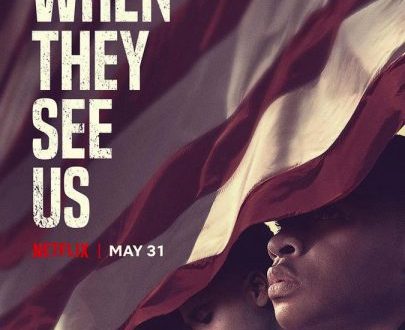When most people think of racism, visions of terrorism delivered mano a mano come to mind. You know … slavery, white hoods, lynchings, and other acts of abject terrorism and the trauma they leave in their wake come to mind. Interpersonal racism’s more comely, yet equally damaging sibling:institutional racism is not only alive and well, but thriving in the most unlikely of places. The time has come to shine a light on a textbook example to provide a better understanding.
The Basics
So that we’re all on the same page here, let’s quickly review four terms that are bandied about a lot. These are not textbook definitions, but shorthand definitions, so that you know where I’m coming from.
- Prejudice is a preconceived opinion that is not based on facts or actual experience. Opinions are still acceptable in this country. People are free to think whatever they like about whatever they like.
- Opinions become problematic when they influence people to commit unjust or prejudicial actions or treatment against different categories of people. That’s discrimination.
- Racism, in its simplest terms, is the combination of prejudice (unfounded opinions) and power (the ability to exert force or influence) by one group of people in order to commit discriminatory act (oppress or control) another group of people.
- Institutional racism, as the name implies, is racism that occurs in social institutions (families, religions, educational institutions, economic, and government), as well as political institutions (organizations that create, enforce, apply laws, and settle conflicts). This is also known as systemic racism.
Think of institutional racism as an additional set of criteria People of Color must meet that are not required of white people, to limit access and mobility.For example, an unnecessary hold on a bank deposit or redlining (the practice of denying access to purchase homes in certain neighborhoods). Other examples can be found here.
Backstory
A while back I attended a workshop in Orlando designed to foster citizen engagement and dialogue between Orlando residents, the city, and the Orlando Police Department to help the city better serve all residents. I’ll be the first to say, the workshop was a good one. I had been writing about race relations in America on Medium for a couple years at that point and was surprised that something like this existed in Orlando. By the end of the workshop I was so impressed that I entertained the thought of possibly partnering with this local institution of higher learning by writing an article or two for them.
That night I introduced myself to “Vicki” (director of the department), complemented her on the team’s presentation, asked how I might pursue the possibility of working with them, told her of my writing, and gave her my business card. After a lengthy exchange of emails and presenting numerous writing samples — forget that one of them graced The New York Times — I was invited not to a meeting to discuss how I might be of service to them, but instead she invited me to attend another workshop, and then submit an essay about the experience.
[blink, blink]
Whatever. I did it.
I know, I know … but the subsequent essay proved to be one of my more popular Medium works; so much so that the Medium editorial staff asked to record an audio version of it.
A full year passed between my initial contact with the institution and the submission of A Lynching in Central Florida. Even after submitting the Ocoee story and the audio version that Medium created, forty-two days — almost a full month and a half — passed before I received any acknowledgment that the commissioned work was even received. I sent the following as a gentle nudge —
Vicki,
It’s been a while since I initially reached out following Orlando Speaks about potential opportunities to write for Peace & Justice Institute on a pro bono or paid basis. Over the past few months, we’ve chatted a few times, and since then I’ve sent many samples of my work, attended PJI seminar at your invitation, and at your request I’ve even written another article about that seminar all in the hopes that you would see the benefits I would bring to PJI and that we might at the very least dialog.
While you’ve got your finger on the pulse of larger issues in central Florida, this situation in which I find myself with you — a Person of Color and a disabled person reaching out to make in-roads to someone in a position of power only to have their efforts tepidly rebuffed with no effort to follow through — is yet another example of how and why so many People of Color feel marginalized in central Florida and America today.
People discern how they are regarded from the manner in which others respond to them, not just in word, but in deed. The tag line in a couple of your emails reads, “All People. All Voices. All Matter.” Based on our interaction, I get the distinct impression that this person’s voice doesn’t matter at all.
Much to my surprise, I received a mea culpa email the following day. But instead of following the wisdom in poet Maya Angelou’s maxim —
When people show you who they are, believe them.
— and taking my essay, and moving on; I opted to give Vicki the benefit of the doubt, just as I would like extended to me. (I know, I know. I can hear your moans and groans already. Pipe down.) Vicki and I had a pleasant telephone conversation in which she revealed her need to have their bi-annual publication redesigned. Well, what do you know? I’m an art director, too. After reviewing samples of my work, the long-awaited meeting finally arrived.
We defined the scope of work: a complete redesign of the publication and the Ocoee article. Normally, the redesign of a publication is an exhaustive process involving concept meetings out the wah-zoo, focus groups, approvals, and more. Knowing Vicki’s department wasn’t a for-profit entity, I truncated the process down to a single step: there’ll be no presentation of different concepts, the design you get is the one you get. My price for services to be rendered was beyond competitive and more than equitable. Translation: the price was deeply discounted. I took those liberties for several reasons: a) the client was an educational institution, b) I believed in their professed social activism, c) it was a good faith effort to build a relationship with a new client, and d) it would be an excellent way for me to give back to the community.
Win-win for everybody, right?
All Voices Vicki responded to my proposal with “Oh, that’s more than we can afford. All I have is x-amount.” (X-amount equaled half of my already discounted estimate.)
At that juncture, a shrewder person would have walked away.

Clients with small budgets are nothing new to the design process or any business for that matter. In some industries, clients/customers pay to play — full stop. There is no wiggle room for negotiations. In other industries, vendors are more willing to “work with” a client and their financial constraints. When clients are upfront honest about their resources, the onus then falls to the creative support to decide whether or not they will work with that client, plain and simple.
For reasons cited earlier, I told Vicki if she wanted to eliminate a few services and reduce the scope of the project I might be able to work with her. Miss V.chose which services she could forego, reduced the scope of work accordingly, and an agreement was reached. I promised to deliver a publication that would not only achieve her goals, but also exceed her expectations.
Was my statement cocky? Maybe, but I think of it as confident.
Would I be able to deliver? One hundred and ten percent.
With over twenty years experience in art direction and print production, I am well acquainted with how a project can get derailed, as well as the preventative steps necessary to avoid them. This is the reason people hire professionals: their knowledge and experience.
Vicki was to be my contact person, as opposed to an intern, because as we all know interns come and go, whereas bosses tend to have a longer shelf-life with an employer. #BestLaidPlans. That didn’t happen, I found myself foisted into the hands of an underling … who in the process learned a lot about how to create a publication. Vicki, not so much.
All in all, the production process went okay, despite a few hiccups on the institution’s part. A modicum of snafus can be expected when new partners work together. A phenomenon known as “scope creep” occurred. You know … when the client attempts to increase project’s mutually-agreed scope of workwithout increasing compensation. Since I was already working for a bargain sub-basement rate, I was not about to give my work away for free. I put an abrupt stop to that by attaching a dollar sign to the additional customer alterations. Begrudgingly, Vicki opened her purse strings and the project proceeded.
As promised, the final publication was well received by Vicki, her coworkers, and the intended audience. And why shouldn’t it be well received? They retained the services of a professional.
Fast forward, a few months …
“…I feel as if you’re bullying me.”
All Voices Vicki called to retain my services for a second edition of the publication, this time with a new assistant. I won’t bore you with all the ins and outs of the experience, but suffice it to say it was much less agreeable than the first round (think unanswered emails about her project, ignored content delivery protocols, a robust Scope Creep V2.0, and more. Ignoring the protocols wouldn’t have been so bad if they were ineffectual, but I introduced and explained their purpose from the start: to streamline the production process for all concerned and lessen the likelihood of human error which inevitably leads to more work for me.

Vicki, for some reason, felt entitled to expect more for less money. In one instance, she asked me to give her the names of my trusted vendors. When I declined, she responded that she felt “bullied.” Wait. I think someone’s privilege was showing. She’s the one who feels bullied? She determined her budget. She chose the services she wanted.
Proof of purchase (also known as “the receipts”)
When I reminded Vicki that I offer all my clients vendor selection and supervision, but due to budgetary constraints she opted out of those services. She pretty much called me a liar by stating that I “never” mentioned those services. I politely ended the call. Later in an email I informed her that I am running a business and am not in the habit of giving away my services. I also attached the original proposal wherein “vendor selection and supervision” was noted. The next day, Vicki emailed me another mea culpa.

Just as the second project wrapped up, there were other unnecessary demands with no mention of compensation. Truth be told, I was worn down and wanted the project to be over. I fulfilled Miss Vicki’s requests with no objections, but I decided that would be the last time I would work with her. Ever. A position I still maintain. The coup de grâce came with the confirmation of customer alterations the finance guy emailed which included … wait for it … the 2015–2016 rate for a local studio hired to do similar work for the institution. But wait, there’s more … their rate was four times my rate.
You read that correctly.
Vicki nickel and dimed me and my company to death while someone else’s company got to ride the gravy train for similar work.
“I’d like to speak with the manager, please.”
I thought long and hard about my next steps, aside from never ever working with All Voices Vicki again. There was a bit of irony in all of this, the department in the institution touts itself as a bastion of social justice and equality among all people regardless of race, ethnicity, blah, blah, blah. An article in the publication I produced, written by the institution’s president caught my eye. The article focused on athlete activism, speaking up for those with less resources, equal opportunity for everyone, yaddah, yaddah, yaddah. The article resonated with me on a gut level.
I met with the institution’s president, who is also Vicki’s boss.
During the meeting, I expressed my frustrations with Vicki and concerns for other art directors who might do work with the department. Granted, I didn’t go into as much detail as I did here, but she understood the brusque and slipshod manner in which All Voice’s Vicki handled my situation. She explained that Vicki’s department was undergoing exponential growth and that she was probably working with a budget that was assigned. She went on to tell me how the procurement departments works with guidelines the state of Florida determines. I have two points to raise here —
- If Vicki can’t conduct business on the institution’s behalf in a manner that is respectful and reflective of an institution of higher learning, then maybe Vicki shouldn’t be in her position.
- The rates the state of Florida mandates is outdated. The hourly rate I was quoted is what was paid twenty years ago. (FYI, I don’t work at an hourly rate, I quote by the job itself.) And if that rate is consistent across the board, how is Company Z allowed to be paid four times the rate I was paid?
This, my friends, is textbook institutional racism. Prejudicial acts (diminished compensation) perpetrated by an institution (a college) to control (maintain a lower rate of pay) another group of people (art directors).
Conclusion: talk is cheap
I wrote about this incident not with an attitude of sour grapes, but as a teachable moment and prime example of how institutional racism is alive and well and perpetrated in America’s institutions. These incidents go unrecognized by many white people as institutional racism for three reasons.
- White people have no direct experience with institutional racism and wouldn’t recognize it as such, even if it said to them, “Your papers, please.” Institutions have been set-up to favor white people and denigrate People of Color.
- When these instances are brought to their attention, the typical response is denial. “Oh, that isolated incident isn’t racism. Maybe that happened because of X, Y, or Z.” Or “…how could that be racism? I’m sure it wasn’t personal.” True. Incidents of institutional racism happen to most if not all People of Color. And it’s always personal if you’re the person to whom these incident happen.
- Institutional racism benefits them.
If your immediate is most in line with №2, you fail to include the “W” — white privilege. It’s both the means and the end that perpetuates institutional racism.
It’s oh so easy for people and businesses to espouse positions of “equality for all” and “all voices matter,” to self-identify as a human rights advocate, and to parade around in the guise of an ally or peace and justice warrior.
But … if in your day-to-day dealings with People of Color — especially talented and capable People of Color — who want to partner with you in bringing awareness to social injustice, and you not only maintain but also perpetuate the very systems you claim you are against, your words are nothing more than ashes in your mouth.
Watch this space.
Love one another.



